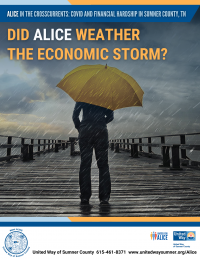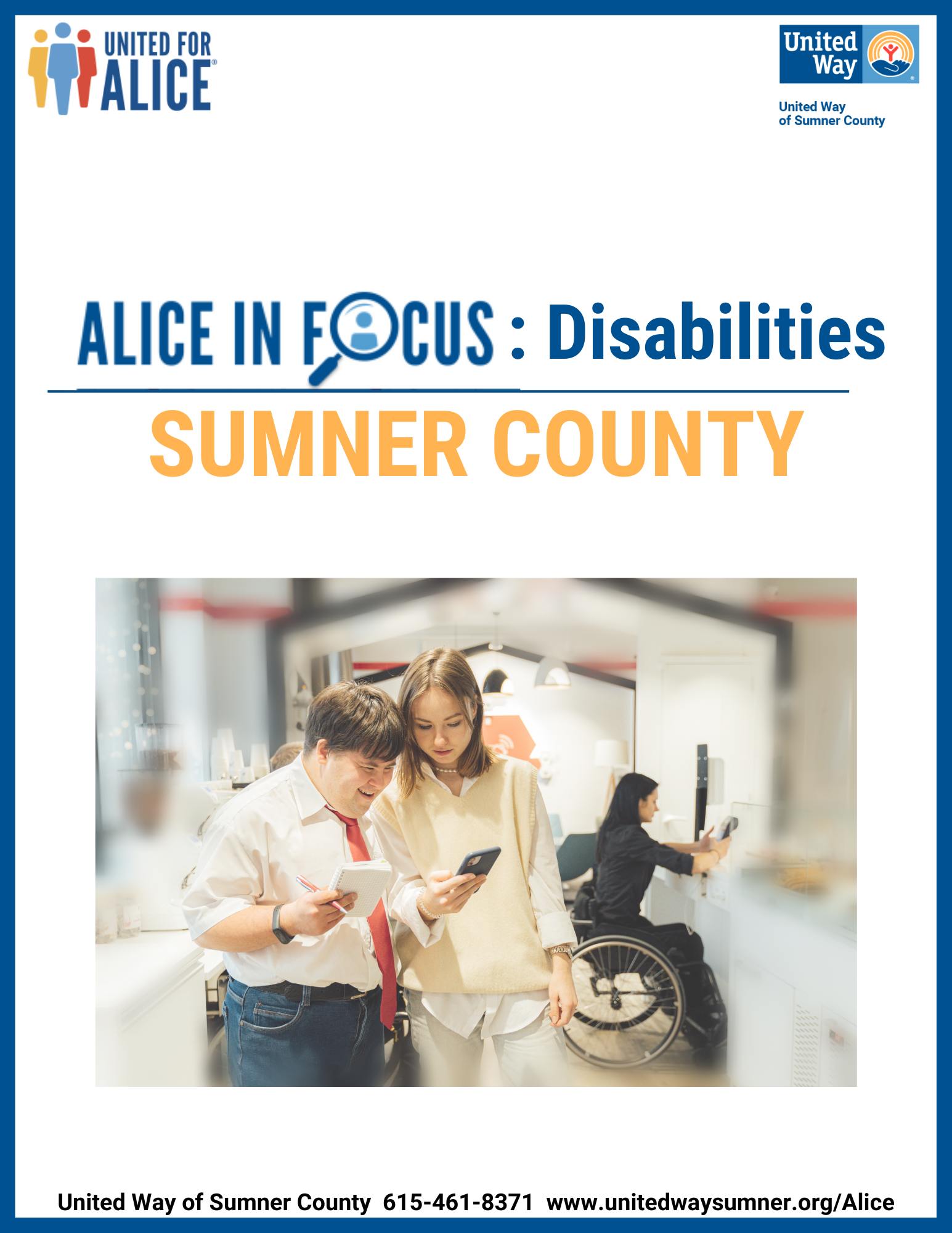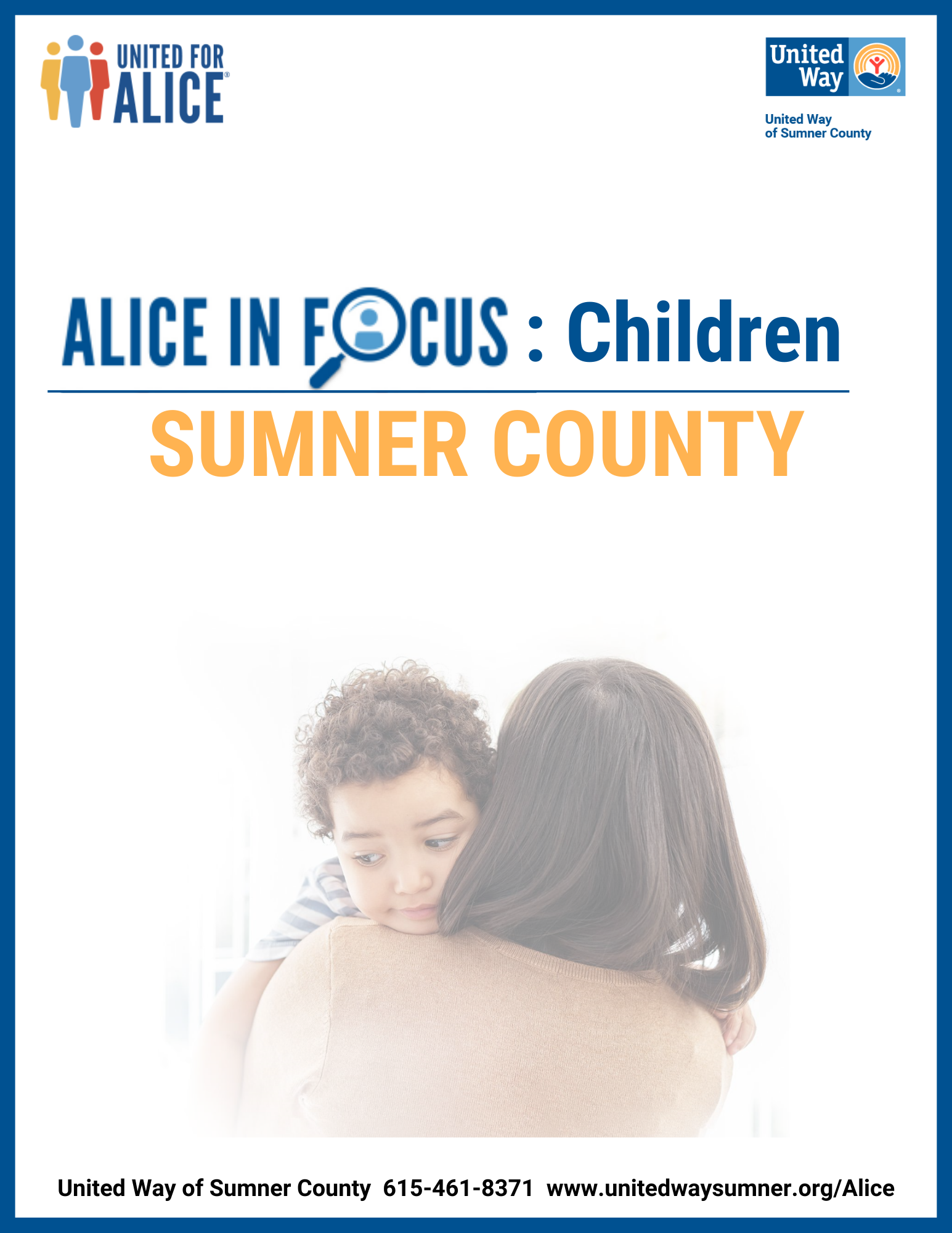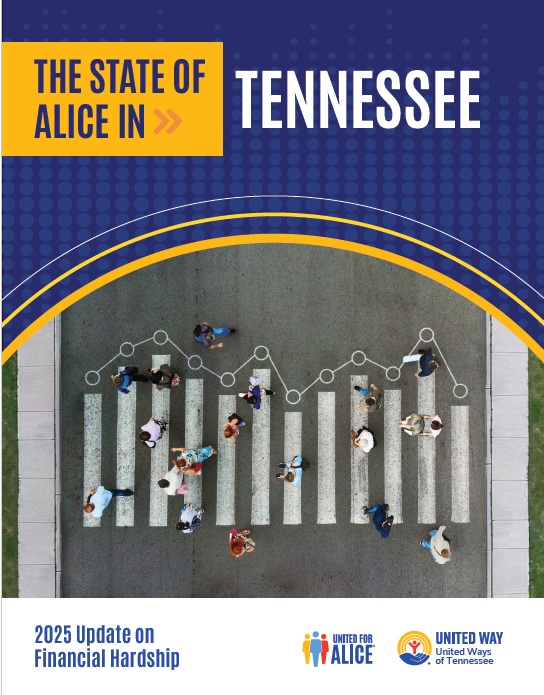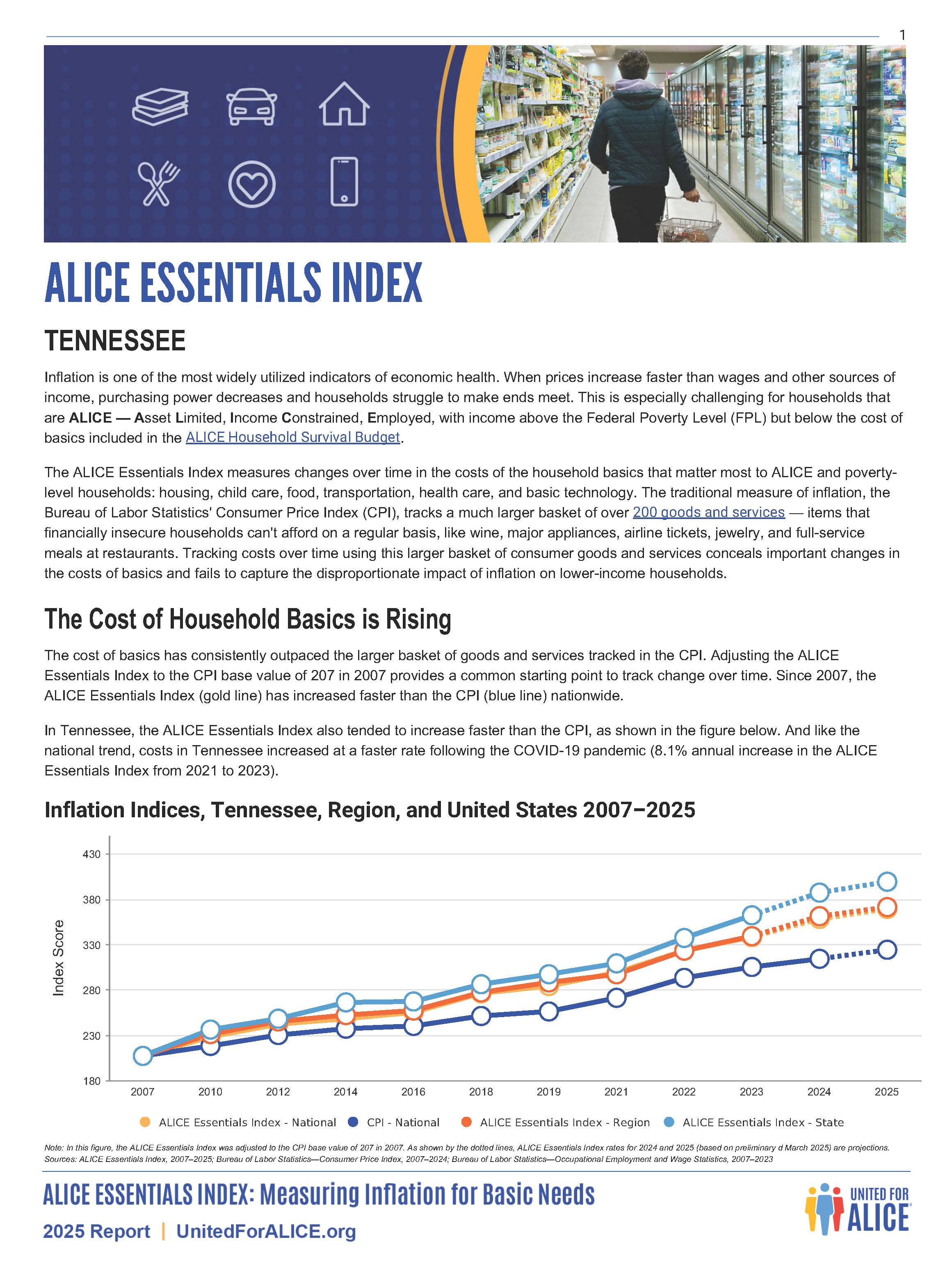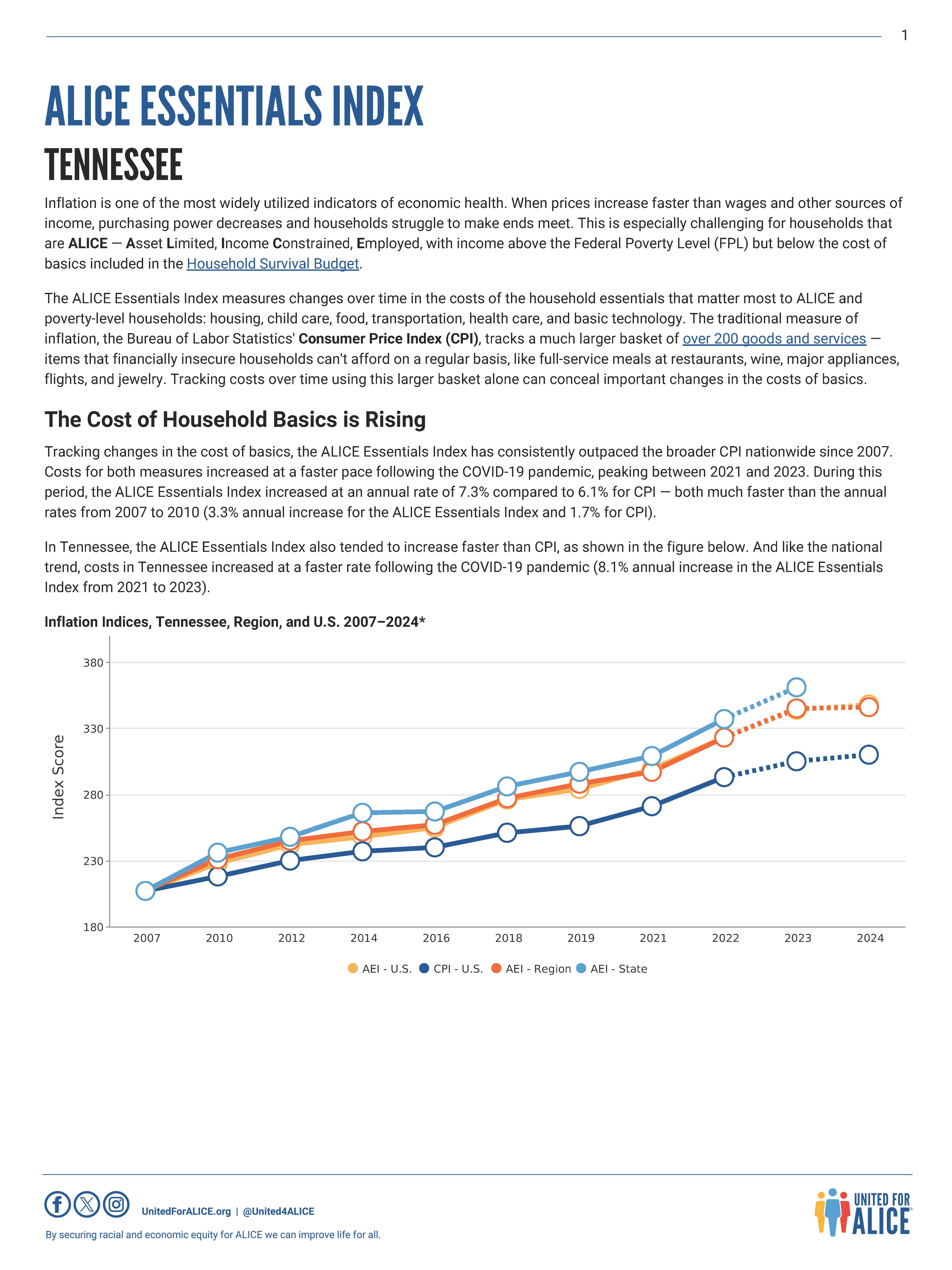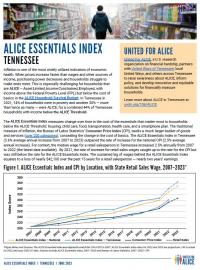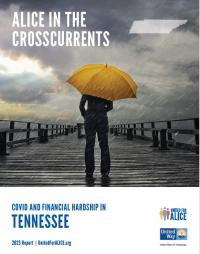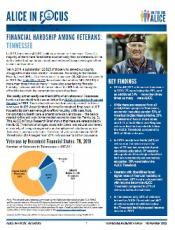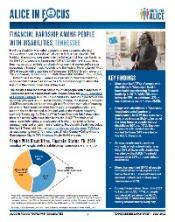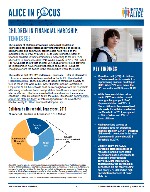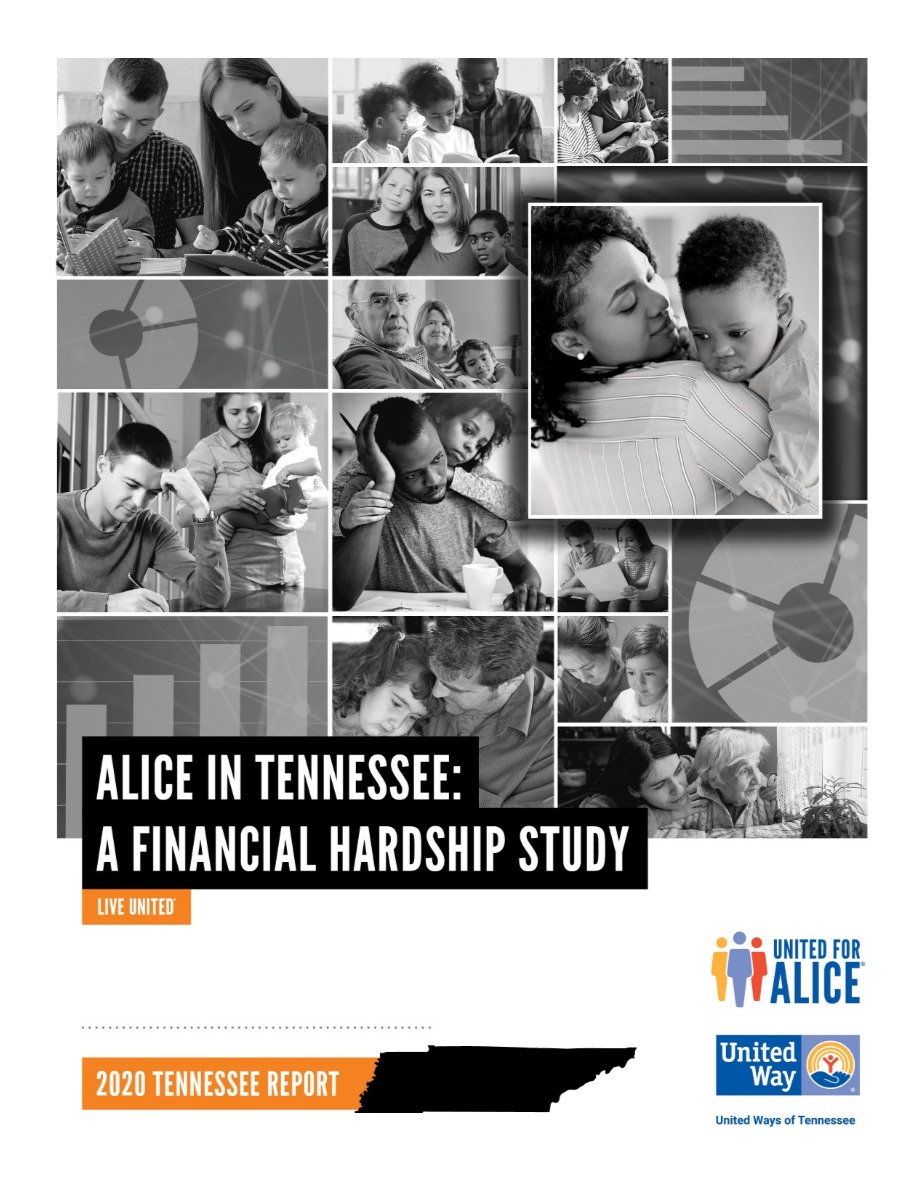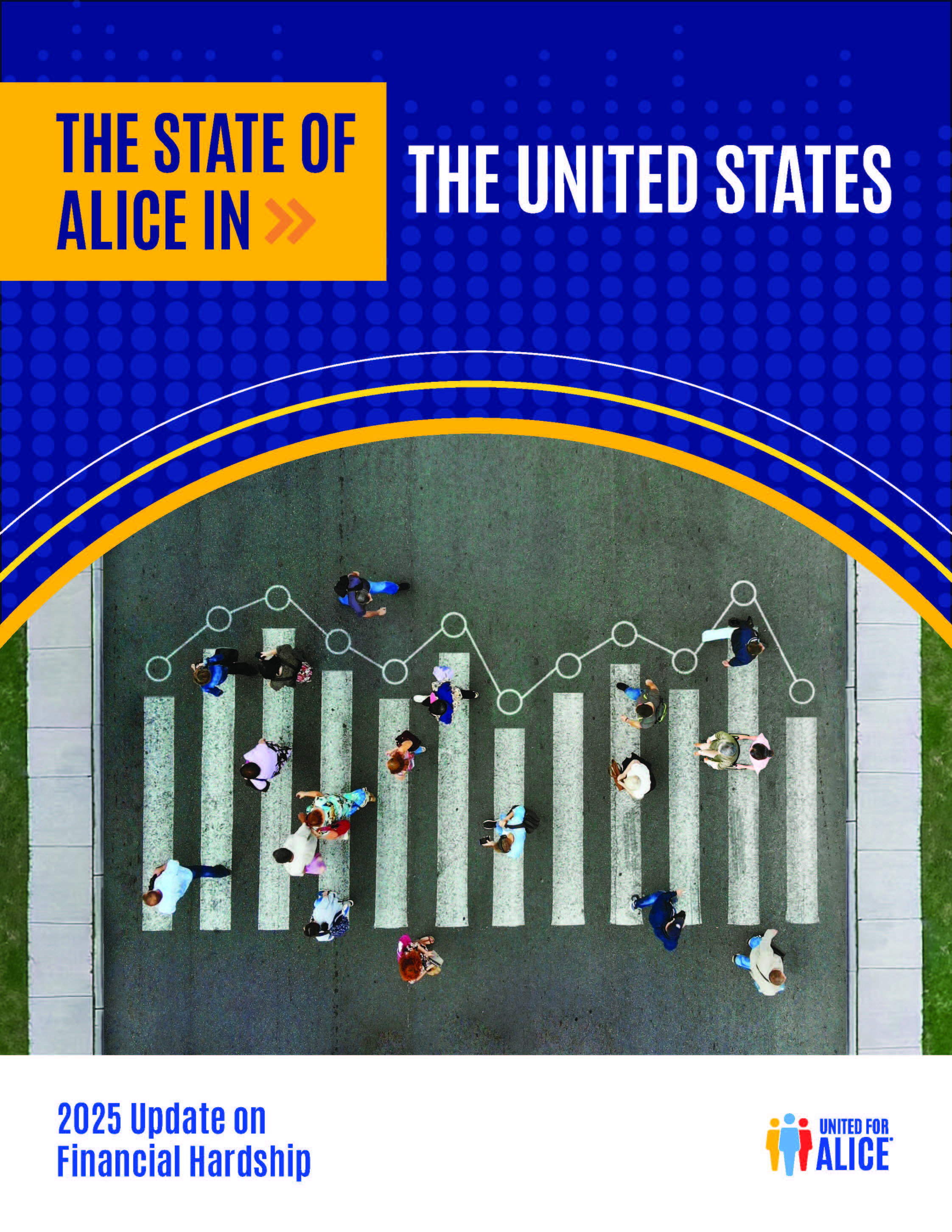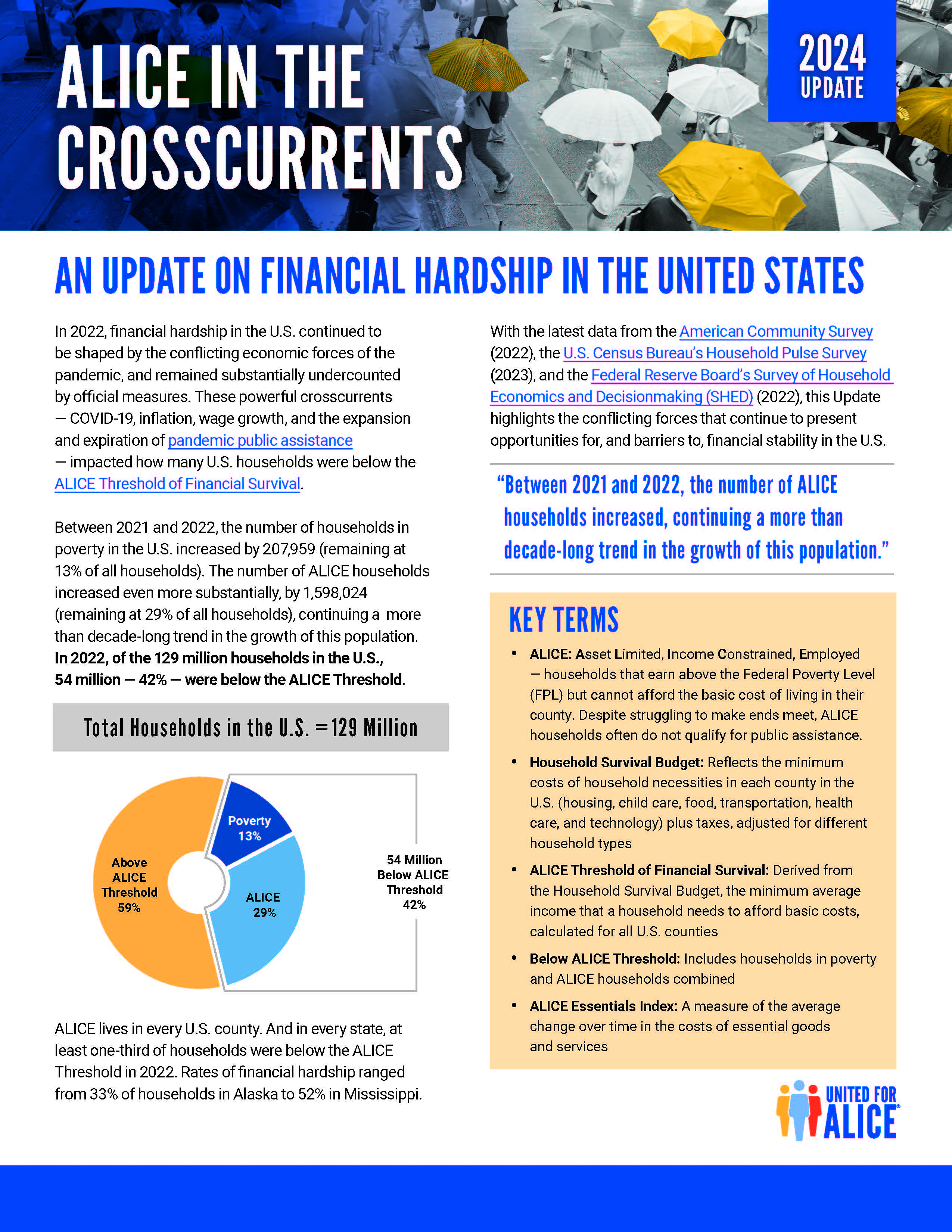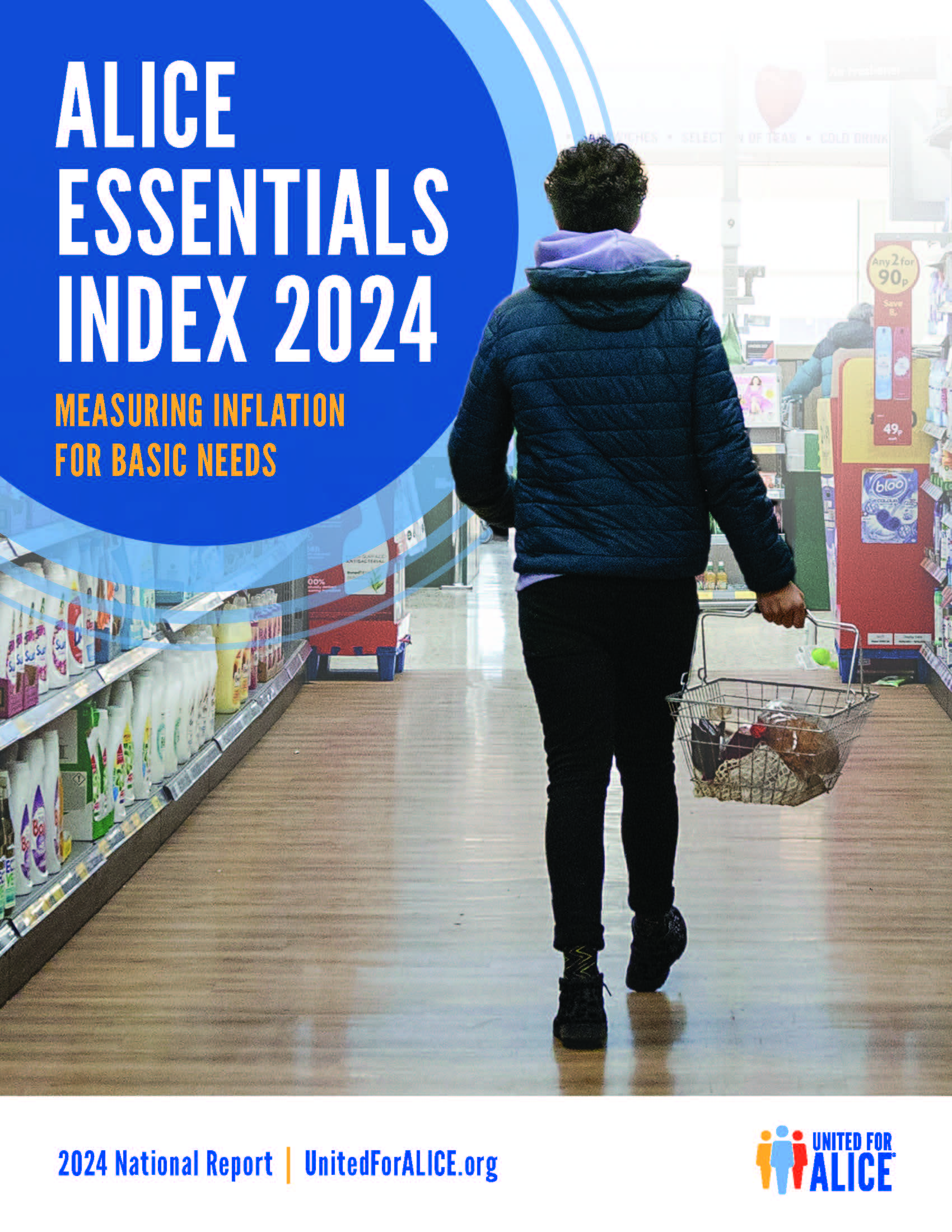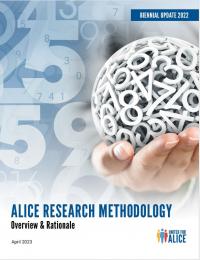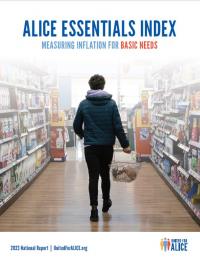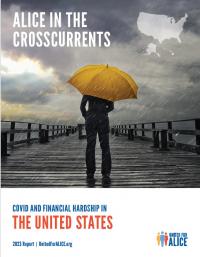
ALICE, an acronym for Asset Limited, Income Constrained, Employed, is a way of defining and understanding the struggles of households that earn above the Federal Poverty Level, but not enough to afford a bare-bones household budget that covers all necessities.
For far too many families, the cost of living outpaces what they earn. These households struggle to manage even their most basic needs - housing, food, transportation, childcare, healthcare, and necessary technology.
When funds run short, cash-strapped households are forced to make impossible choices, such as deciding between quality child care or paying the rent, filling a prescription or fixing the car. These short-term decisions have long-term consequences not only for ALICE families, but for all of us.
WHO IS ALICE?
Despite the critical nature of many jobs to keep our local economies running – educating our youngest children, keeping our ailing parent safe – these workers often struggle to keep their own households from financial ruin.
ALICE is your childcare worker, the cashier at your supermarket, the gas attendant, the salesperson at your big box store, your waitress, a home-health aide, an office clerk. ALICE cannot always pay the bills, has little or nothing in savings, and is forced to make tough choices such as deciding between quality child care or paying the rent. One unexpected car repair or medical bill can push these financially strapped families over the edge.
REQUEST AN ALICE SPEAKER
United Way of Sumner County is happy to share our ALICE information with groups who want to learn more about the needs in our community, fully understand and know what they can do to advocate for ALICE, and see what we are doing locally to meet the needs of ALICE. If you would be interested in having us speak to your employees, a civic organization, members of an association or group, etc., click here to request a UWSC ALICE speaker.
LEARN MORE ABOUT ALICE
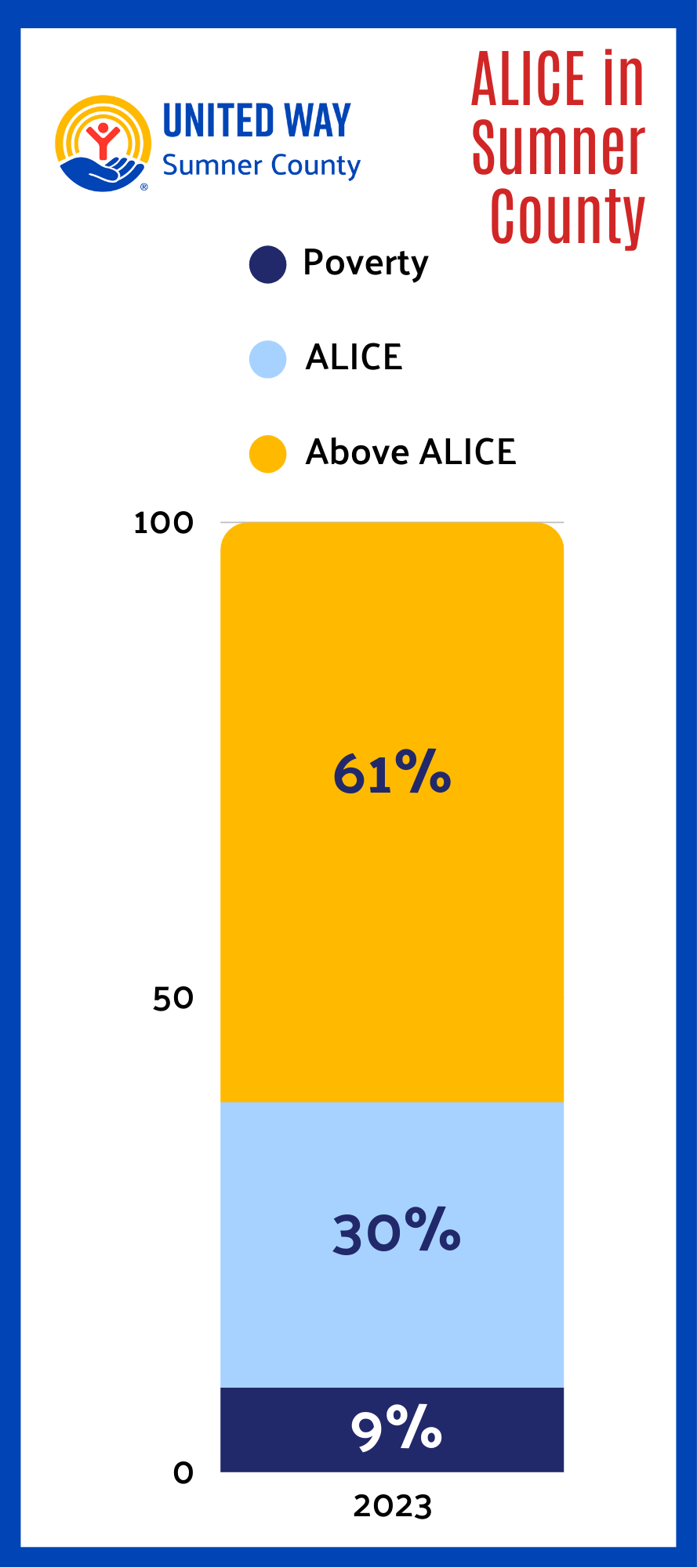
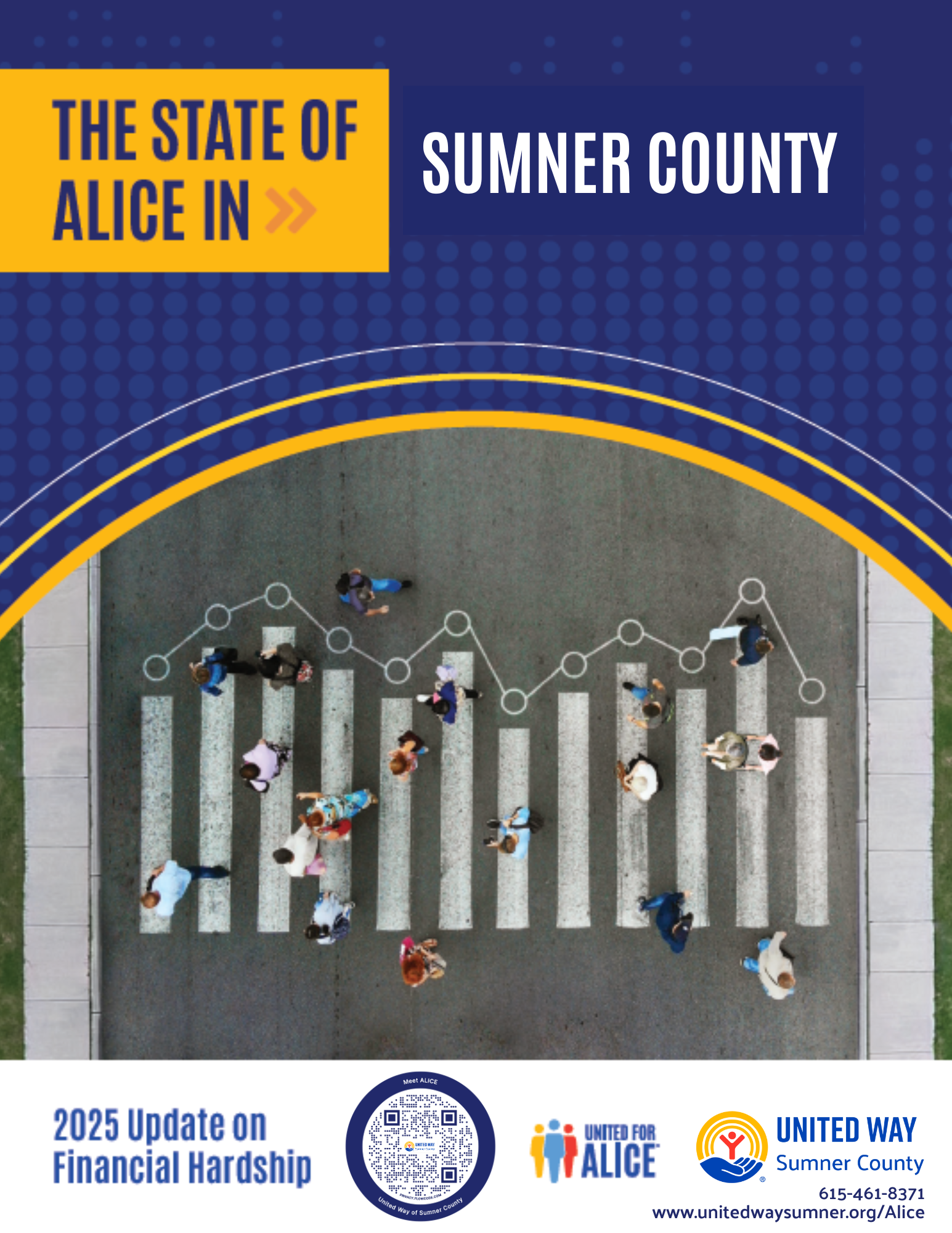
2025 STATE OF ALICE - Sumner County Summary Report - .pdf:
In 2023, based on the Federal Poverty Level, (FPL), 9% of Sumner County households were defined as living in poverty. Yet this measure failed to account for an additional 30% of the county’s households - more THREE times as many - that were also experiencing financial hardship. These households are known as ALICE: Asset Limited Income Constrained Employed. They are working and earn above the FPL, but do not make enough to afford basic expenses where we live.
2025 report with 2023 data
2024 ALICE IN THE CROSSCURRENTS: COVID AND FINANCIAL HARDSHIP - Sumner County Summary Report - .pdf:
In 2022, financial hardship in Sumner County continued to be shaped by the conflicting economic forces of the pandemic. These powerful crosscurrents — COVID-19, inflation, wage growth, and the expansion and expiration of pandemic public assistance — impacted how many Sumner County households were below the ALICE Threshold of Financial Survival.
In 2022, Sumner County had a total of 79,326 households. 37% of them were below the ALICE Threshold (living in poverty or considered ALICE - making above the FPL, but less than what it costs to live in Sumner County.) Though these numbers appear to show a decrease in the number of struggling households from the prior year, this report also details how demographic shifts may be masking economic struggles in Sumner County.
2024 report with 2022 data
Insights from the Economic Viability Tool - Sumner County Summary Report - .pdf:
The ALICE Economic Viability Dashboard (EVD) provides us with a holistic view of the conditions that impact our community in the three basic domains of work, housing, and community resources. ALICE's well-being depends on each of these three interconnected domains. This report shares the findings of where Sumner County could do better in creating communities that support ALICE families by providing an Action Planner that details the priorities for improvement in each domain and sharing Promising Practices that other communities have used to successfully tackle these challenges.
2024 report with 2021 data
2023 ALICE IN THE CROSSCURRENTS: COVID AND FINANCIAL HARDSHIP - Sumner County Summary Report - .pdf:
While the COVID-19 pandemic brought employment shifts, health struggles, and school/business closures, it also spurred unprecedented public assistance through pandemic relief measures. This report, using 2021 data, examines the extent of financial hardship in Sumner County using the first ALICE metrics available since the COVID-19 pandemic began.
2023 report with 2021 data
2022 "ALICE In Focus: Veterans" Sumner County Summary Report - .pdf: The ALICE In Focus series analyzes the most recent data from 2019 and highlights specific segments of the ALICE demographic. The third in the series, "ALICE in Focus: Veterans" finds that though they've served and sacrificed for our country, many veterans are living paycheck to paycheck. This report compiles the data for Sumner County, Tennessee.
2022 report with 2019 data
2022 "ALICE In Focus: Disabilities" Sumner County Summary Report - .pdf: The ALICE In Focus series analyzes the most recent data from 2019 and highlights specific segments of the ALICE demographic. The second in the series, "ALICE in Focus: Disabilities" finds that traditional measures hide the full extent of financial hardship for those with cognitive, hearing, vision, or ambulatory disabilities or one that makes self-care of independent living difficult. This report compiles the data for Sumner County, Tennessee.
2022 report with 2019 data
2022 "ALICE In Focus: Children" Sumner County Summary Report - .pdf: The ALICE In Focus series analyzes the most recent data from 2019 and highlights specific segments of the ALICE demographic. The first in the series, "ALICE in Focus: Children" finds that traditional measures of poverty have severely undercounted the number of children of all races, ages 18 and younger, who are growing up in households that struggle to meet their basic needs. This report compiles the data for Sumner County, Tennessee.
2022 report with 2019 data
2020 ALICE Sumner County Summary - This report based on 2018 data details overall ALICE demographic data by household, zip code, county commission district, and more.
2020 report with 2018 data
The 2025 State of ALICE Tennessee Report pdf: Between ALICE households and households living in poverty, an estimated 44% of households in Tennessee were below the ALICE Threshold in 2023. This rate placed Tennessee 37th among all states and the District of Columbia (with 1st representing the lowest rate of hardship). Households below the Threshold are forced to make impossible choices — like deciding whether to pay for utilities or a car repair, whether to buy food or fill a prescription.
2025 report with 2023 data
The 2025 ALICE Essentials Index Tennessee Report pdf: Inflation is one of the most widely utilized indicators of economic health. When prices increase faster than wages and other sources of income, purchasing power decreases and households struggle to make ends meet.
The ALICE Essentials Index measures changes over time in the costs of the household basics that matter most to ALICE and poverty-level households: housing, child care, food, transportation, health care, and basic technology. The traditional measure of inflation, the Bureau of Labor Statistics' Consumer Price Index (CPI), tracks a much larger basket of over — items that financially insecure households can't afford on a regular basis, like wine, major appliances, airline tickets, jewelry, and full-service meals at restaurants. Tracking costs over time using this larger basket of consumer goods and services conceals important changes in the costs of basics and fails to capture the disproportionate impact of inflation on lower-income households.
2025 report with 2023 data
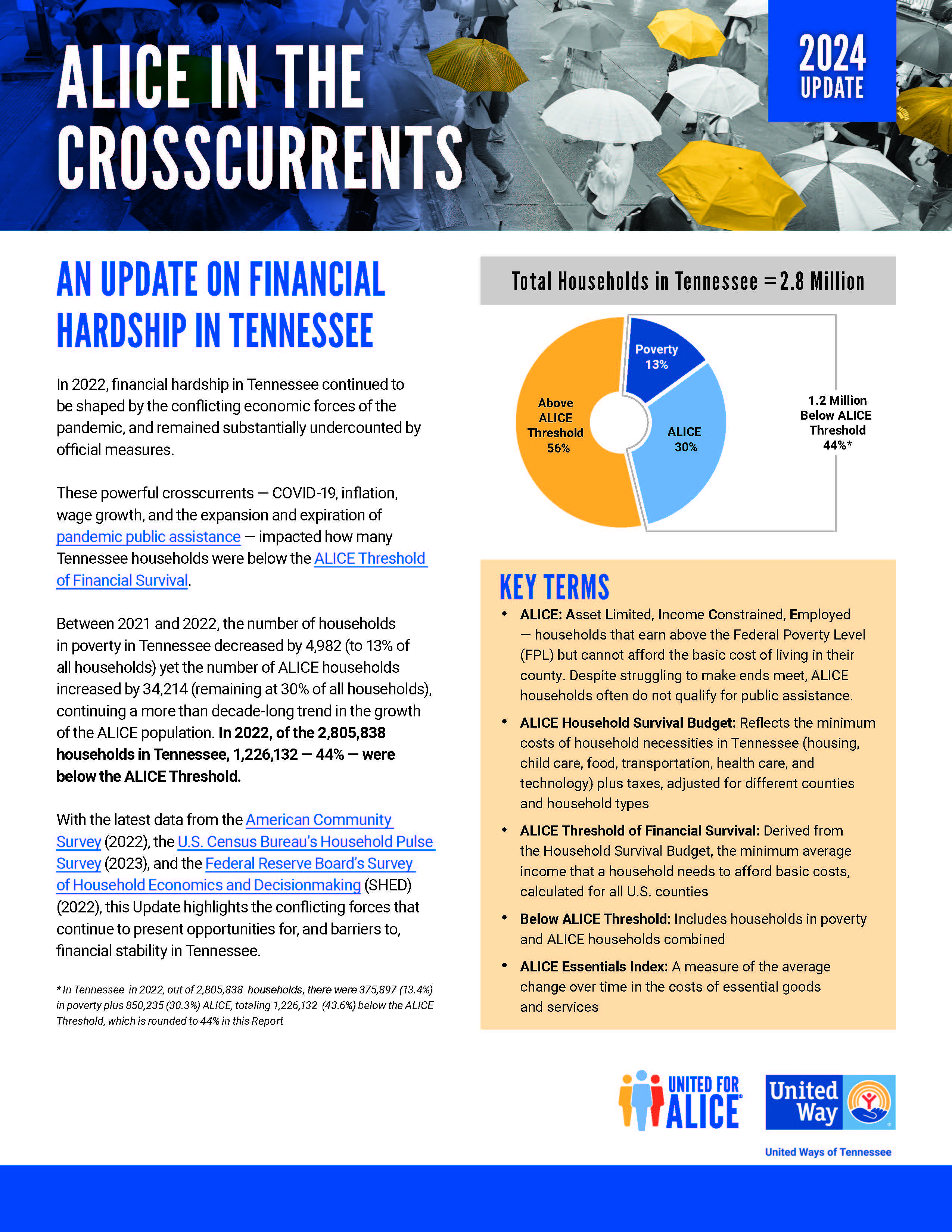
ALICE in the Crosscurrents: Tennessee State Data Sheet pdf: In 2022, financial hardship in Tennessee continued to be shaped by the conflicting economic forces of the pandemic. These powerful crosscurrents — COVID-19, inflation, wage growth, and the expansion and expiration of pandemic public assistance — impacted how many Tennessee households were below the ALICE Threshold of Financial Survival.
In 2022, Tennessee had a total of 2,805,838 households. 44% of them (1,226,132 households) were below the ALICE Threshold (living in poverty or considered ALICE - making above the FPL but less than what it costs to live in Tennessee.)
2024 report with 2022 data
ALICE ESSENTIALS INDEX: 2024 Tennessee State Data Sheet pdf: The ALICE Essentials Index measures the increase over time in the costs of the essential goods and services that households need to live and work in the modern economy. These minimum costs are itemized in the ALICE Household Survival Budget.
The ALICE Essentials Index includes only essential household items (housing, child care, food, transportation, health care, and a smartphone plan). In comparison, the Bureau of Labor Statistics’ Consumer Price Index (CPI) covers a large group of goods and services that urban consumers buy regularly (housing, food and beverages, transportation, medical care, apparel, recreation, education, and communication services).
2024 report with 2022 data
ALICE ESSENTIALS INDEX: Tennessee State Data Sheet pdf: The ALICE Essentials Index measures the increase over time in the costs of the essential goods and services that households need to live and work in the modern economy. These minimum costs are itemized in the ALICE Household Survival Budget.
The ALICE Essentials Index includes only essential household items (housing, child care, food, transportation, health care, and a smartphone plan). In comparison, the Bureau of Labor Statistics’ Consumer Price Index (CPI) covers a large group of goods and services that urban consumers buy regularly (housing, food and beverages, transportation, medical care, apparel, recreation, education, and communication services).
2023 report with 2021 data
ALICE IN THE CROSSCURRENTS: COVID AND FINANCIAL HARDSHIP IN TENNESSEE pdf: United For ALICE calculates the cost of household essentials for all counties in Tennessee. These costs, outlined in the Household Survival Budget, are calculated for various household sizes and compositions.
Of Tennessee's 2,740,302 households in 2021…
14% earned below the Federal Poverty Level (FPL)
30% were ALICE, in households that earned above the FPL but not enough to afford the basics in the communities where they live
Together, 44% of households in Tennessee were below the ALICE Threshold (poverty + ALICE divided by total households)
While the COVID-19 pandemic brought employment shifts, health struggles, and school/business closures in 2021, it also spurred unprecedented public assistance through pandemic relief measures. In 2019, 1,211,160 households in Tennessee were below the ALICE Threshold; by 2021, that number had changed to 1,196,900. Use the buttons below to switch between ALICE data over time by number and percentage.
2023 report with 2021 data
https://www.unitedforalice.org/state-overview/tennessee
2022 ALICE In Focus: Veterans, Tennessee Report - .pdf: The ALICE In Focus series analyzes the most recent data from 2019 and highlights specific segments of the ALICE demographic. The third in the series, "ALICE in Focus: Veterans" finds that even though they have sacrificed and served our country, many veterans are living paycheck to paycheck. This report compiles the data for the state of Tennessee.
2022 report with 2019 data
2022 ALICE In Focus: Disabilities, Tennessee Report - .pdf: The ALICE In Focus series analyzes the most recent data from 2019 and highlights specific segments of the ALICE demographic. The second in the series, "ALICE in Focus: Disabilities" finds that traditional measures hide the full extent of financial hardship for those with cognitive, hearing, vision, or ambulatory disabilities or one that makes self-care of independent living difficult. This report compiles the data for the state of Tennessee.
2022 report with 2019 data
2022 ALICE In Focus: Children, Tennessee Report - .pdf: The ALICE In Focus series analyzes the most recent data from 2019 and highlights specific segments of the ALICE demographic. The first in the series, "ALICE in Focus: Children" finds that traditional measures of poverty have severely undercounted the number of children of all races, ages 18 and younger, who are growing up in households that struggle to meet their basic needs. This report compiles the data for the state of Tennessee.
2022 report with 2019 data
2020 ALICE In Tennessee Report - .pdf: The 2020 ALICE in Tennessee Report provides a statewide overview of ALICE demographics in the state, the cost of living in Tennessee, and the changing landscape of work for state residents. The report provides an overall picture of economic conditions for the ALICE population by county; health, education, and social factors impacting our residents; and data for determining next steps.
2020 report with 2018 data
2025 State of ALICE IN THE UNITED STATES pdf: Between ALICE households and households living in poverty, an estimated 42% of households in the U.S. were below the ALICE Threshold in 2023. Rates ranged from 33% in North Dakota to 50% in Louisiana. Households below the Threshold are forced to make impossible choices — like deciding whether to pay for utilities or a car repair, whether to buy food or fill a prescription. Yet they often earn too much to qualify for public assistance.
2025 Report with 2023 data.
ALICE IN THE CROSSCURRENTS: COVID AND FINANCIAL HARDSHIP IN THE UNITED STATES 2024 Update pdf: United For ALICE calculates the cost of household essentials for all counties in the U.S. These costs, outlined in the Household Survival Budget, are calculated for various household sizes and compositions.
Between 2021 and 2022, the number of households in poverty in the U.S. increased by 207,959 (remaining at 13% of all households). The number of ALICE households increased even more substantially, by 1,598,024 (remaining at 29% of all households), continuing a more than decade-long trend in the growth of this population. In 2022, of the 129 million households in the U.S., 54 million — 42% — were below the ALICE Threshold.
2024 Report with 2022 data.
ALICE Essentials Index 2024 National Report - pdf: The ALICE Essentials Index measures the increase over time in the costs of the essential goods and services that households need to live and work in the modern economy. These minimum costs are itemized in the ALICE Household Survival Budget.
The ALICE Essentials Index includes only essential household items (housing, child care, food, transportation, health care, and a smartphone plan). In comparison, the Bureau of Labor Statistics’ Consumer Price Index (CPI) covers a large group of goods and services that urban consumers buy regularly (housing, food and beverages, transportation, medical care, apparel, recreation, education, and communication services).
2024 Report with 2022/2023 data.
https://www.unitedforalice.org/essentials-index
ALICE Research Methodolgy April 2023 pdf: United for ALICE conducts timely, high-quality research to better understand the nature and scope of financial hardship in the U.S. — from a national perspective down to the local level. To develop the ALICE Methodology, ALICE researchers collaborate with a Methodology Advisory Committee composed of experts from across the country, drawn from the Research Advisory Committees for each ALICE partner state. This process takes place every two years. This collaborative model ensures that all ALICE products and tools are based on publicly available data that is transparent, replicable, current, and sensitive to local context.
Biennial Update 2022, April 2023 report
ALICE ESSENTIALS INDEX: MEASURING INFLATION FOR BASIC NEEDS pdf: The ALICE Essentials Index measures the increase over time in the costs of the essential goods and services that households need to live and work in the modern economy. These minimum costs are itemized in the ALICE Household Survival Budget.
The ALICE Essentials Index includes only essential household items (housing, child care, food, transportation, health care, and a smartphone plan). In comparison, the Bureau of Labor Statistics’ Consumer Price Index (CPI) covers a large group of goods and services that urban consumers buy regularly (housing, food and beverages, transportation, medical care, apparel, recreation, education, and communication services).
2023 Report with 2021 data.
https://www.unitedforalice.org/essentials-index
ALICE IN THE CROSSCURRENTS: COVID AND FINANCIAL HARDSHIP IN THE UNITED STATES pdf: United For ALICE calculates the cost of household essentials for all counties in the U.S. These costs, outlined in the Household Survival Budget, are calculated for various household sizes and compositions.
Of the 126,903,920 households in the U.S. in 2021…
- 13% earned below the Federal Poverty Level (FPL)
- 29% were ALICE, in households that earned above the FPL but not enough to afford the basics in the communities where they live
- Together, 41% of households in the U.S. were below the ALICE Threshold (poverty + ALICE divided by total households)
While the COVID-19 pandemic brought employment shifts, health struggles, and school/business closures in 2021, it also spurred unprecedented public assistance through pandemic relief measures. Before the pandemic, in 2019, 49,791,793 households were below the ALICE Threshold; by 2021 that number had changed to 52,539,023.
2023 Report with 2021 data.
https://unitedforalice.org/national-overview
The Pandemic Divide - pdf: Before the pandemic, 42% of U.S. households were already unable to make ends meet. This includes households in poverty and those that are ALICE (Asset, Limited, Income Constrained, Employed). With income above the Federal Poverty Level, ALICE households earn too much to qualify as “poor” but are still unable to cover basic household expenses in the counties where they live.
Our Report, The Pandemic Divide: An ALICE Analysis of National COVID Surveys, reveals that ALICE families fared significantly worse than higher income households during the pandemic — financially, physically, and emotionally.
2021 report
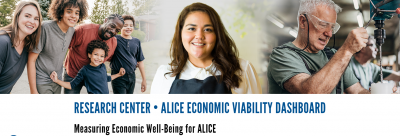
ALICE Economic Viability Dashboard Action Planner: This website includes 2021 data from ALICE Economic Viability Dashboard and allows the user to explore the Promising Practices for each of the Work, Housing, and Community Domains. Data can be selected specific to state and county.
![]()
ALICE Household Survival Budgets: This website allows the user to explore the most recent ALICE Household Survival Budget amounts for various Household Types, selecting data specific to state and county.
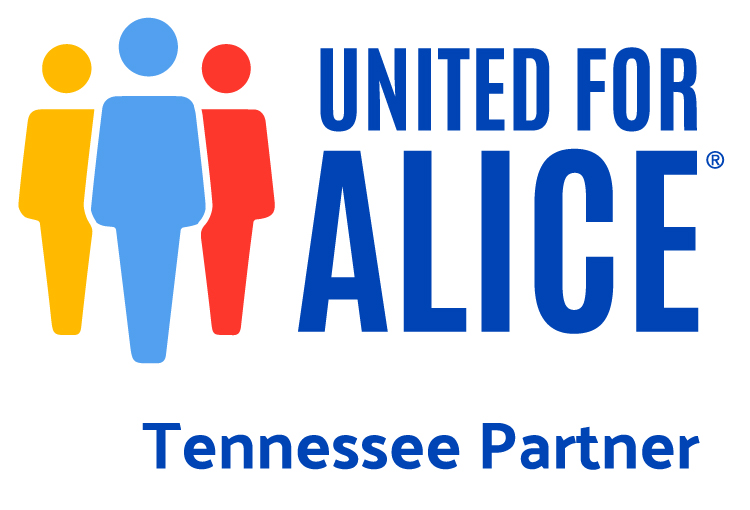
United for ALICE Interactive Website: The United for ALICE project has conducted studies of economic hardship in more than 20 states. This website allows you to view National reports, State reports, and reports by Special Topic. There is also an interactive Wage Tool that allows you to explore the ALICE Household Survival Budget for various sizes of family and and an interactive Legislative District Tool that allows you to see the percent of households living under the ALICE threshold in each district.

Research Center for Tennessee: This interactive website allows you to view the latest data for Tennessee by various demographics and by county.
Research Center ALICE Essentials Index: This website allows you to explore data by state in regards to the ALICE Essentials Index.
ALICE Legislative District Tool: While the Federal Poverty Level is the basis for many public programs, looking at poverty alone excludes the 36.3 million households in the U.S. who are ALICE (Asset Limited, Income Constrained, Employed), earning above the poverty level but below the basic cost of living in their communities. This interactive tool helps policymakers and community stakeholders better understand how many households are actually struggling in their district.
Research Center for ALICE in Focus Children: This website allows you to explore data from the ALICE in Focus: Children report by state and a variety of categories and subcategories including age, race, living arrangement, housing, etc.
Research Center for ALICE in Focus Disabilities: This website allows you to explore data from the ALICE in Focus: Disabilities report by state and a variety of categories and subcategories including age, race, disability type, living arrangement, education, labor status, etc.
Research Center for ALICE in Focus Veterans: This website allows you to explore data from the ALICE in Focus: Veterans report by state and a variety of categories and subcategories including age, race, disability status, living arrangement, education, work status, etc.

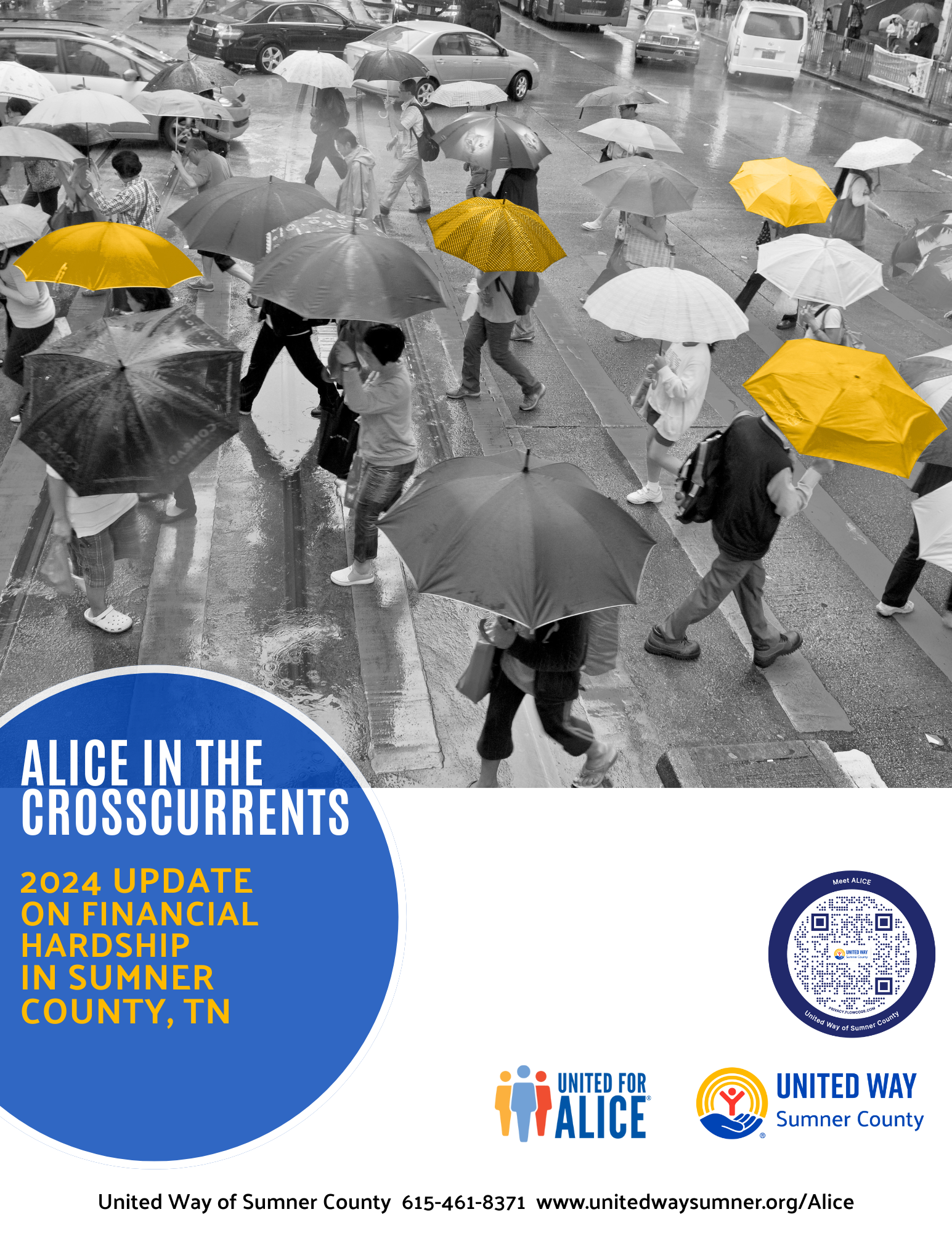
%20Sumner%20County%20Summary%20cover%20page.png)
